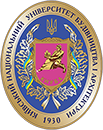Аналіз стандартів управління ризиками та їх використання в ІТ-проєктах
1. Сосновська О. О., Деденко Л. В. Ризик-менеджмент як інструмент забезпечення стійкого функціонування підприємства в умовах невизначеності. Європейський науковий журнал Економічних та Фінансових інновацій. 2019. № 1 (3). С. 70–79. DOI: 10.32750/2019-0106.
2. US Department of Homeland Security. A Guide to the Cost-Effective and Efficient Communication of Needs. 2008. 353. URL: https://www.dhs.gov/xlibrary/assets/Developing_Operational_Requirements_Guides.pdf.
3. ISO 31000 – Risk management. URL: https://www.iso.org/iso-31000-risk-management.html.
4. ISO/IEC 27001:2022 – Information security, cybersecurity and privacy protection – Information security management systems – Requirements. URL: https://www.iso.org/standard/27001.
5. National Institute of Standards and Technology Special Publication 800-53. Rev. 5. 2020. 492. DOI: 10.6028/NIST.SP.800-53r5.
6. Project Management Institute. A Guide to the Project Management Body of Knowledge (PMBOK Guide) (7th ed.). Project Management Institute. 2021. 250. URL: https://www.pmi.org/standards/pmbok.
7. Microsoft Compliance Offerings. URL: https://learn.microsoft.com/en-us/microsoft-365/compliance/offering-home.
8. IBM Cloud ISO 31000 compliance. URL: https://www.ibm.com/cloud/compliance/iso-31000.
9. Internal Audit Services | Deloitte SEA | Risk Advisory. URL: https://www2.deloitte.com/sg/en/pages/risk/ solutions/internal-audit-services.html.
10. Purdy, G. ISO 31000:2009 – Setting a New Standard for Risk Management. Risk Analysis. 30(6), 2010. P. 881–886. DOI: 10.1111/j.1539-6924.2010.01442.x.
11. Luko, S. N. Risk Management Principles and Guidelines. Quality Engineering. 25(4), 2013. P. 451–454. DOI: 10.1080/08982112.2013.814508.
12. Leitch, M. ISO 31000:2009 – The New International Standard on Risk Management. Risk Analysis. 30 (6), 2010. P. 887–892. DOI: 10.1111/j.1539-6924.2010.01397.x.
13. Calder, A., ISO27001/ISO27002 A Pocket Guide: 2013 Second Edition by IT Governance Publishing (Editor). 2013. 86.
14. Von Solms, R., & Van Niekerk, J. From information security to cyber security. Computers & Security, 38, 2013. P. 97–102. DOI: 10.1016/j.cose.2013.04.004.
15. Peltier, T. R. Information Security Policies, Procedures, and Standards: Guidelines for Effective Information Security Management. CRC Press. 2013. 408. DOI: 10.1201/9780203488737.
16. Morris, P. W. G. Reconstructing Project Management. Wiley-Blackwell. 2013. 319. DOI: 10.1002/9781118536698.
17. Kerzner, H. Project Management: A Systems Approach to Planning, Scheduling, and Controlling. John Wiley & Sons. 2022. 880.
18. Fernandes, G., Ward, S., & Araújo, M. Improving and embedding project management practice in organisations – A qualitative study. International Journal of Project Management, 33(5), 2015. P. 1052–1067. DOI: 10.1016/j.ijproman.2015.01.012.
19. ДСТУ IEC/ISO 31010:2013 Керування ризиком. Методи загального оцінювання ризику (IEC/ISO 31010:2009, IDT). [Чинний від 2014-07-01]. Вид. офіц. Київ : Мінекономрозвитку України, 2015. 80 с.
20. ДСТУ ISO 31000:2018 Менеджмент ризиків. Принципи та настанови (ISO 31000:2018 Risk Management – Principles and guidelines on implementation, IDT) [Чинний від 2019-01-01]. Вид. офіц. Київ : Мінекономрозвитку України, 2018. 23 с.
1. Sosnovska, O., Dedenko, L. (2019). Risk management as an instrument for providing the stable functioning of the enterprise in understanding condition. European scientific journal of Economic and Financial innovation, 1 (3), 70–79. DOI: 10.32750/2019-0106.
2. US Department of Homeland Security. A Guide to the Cost-Effective and Efficient Communication of Needs. 2008. 353. URL: https://www.dhs.gov/xlibrary/assets/Developing_Operational_Requirements_Guides.pdf.
3. ISO 31000 – Risk management. URL: https://www.iso.org/iso-31000-risk-management.html.
4. ISO/IEC 27001:2022 – Information security, cybersecurity and privacy protection – Information security management systems – Requirements. URL: https://www.iso.org/standard/27001.
5. National Institute of Standards and Technology Special Publication 800-53 (2020). Rev. 5. 492. DOI: 10.6028/NIST.SP.800-53r5.
6. Project Management Institute. (2021). A Guide to the Project Management Body of Knowledge (PMBOK Guide) (7th ed.). Project Management Institute. URL: https://www.pmi.org/standards/pmbok.
7. Microsoft Compliance Offerings. URL: https://learn.microsoft.com/en-us/microsoft-365/compliance/offering-home.
8. IBM Cloud ISO 31000 compliance. URL: https://www.ibm.com/cloud/compliance/iso-31000.
9. Internal Audit Services | Deloitte SEA | Risk Advisory. URL: https://www2.deloitte.com/sg/en/pages/risk/ solutions/internal-audit-services.html.
10. Purdy, G. (2010). ISO 31000:2009 – Setting a New Standard for Risk Management. Risk Analysis, 30 (6), 881–886. DOI: 10.1111/j.1539-6924.2010.01442.x.
11. Luko, S. N. (2013). Risk Management Principles and Guidelines. Quality Engineering, 25(4), 451–454. DOI: 10.1080/08982112.2013.814508.
12. Leitch, M. (2010). ISO 31000:2009 – The New International Standard on Risk Management. Risk Analysis, 30 (6), 887–892. DOI: 10.1111/j.1539-6924.2010.01397.x.
13. Calder, A. (2013). ISO27001/ISO27002 A Pocket Guide: 2013 Second Edition by IT Governance Publishing (Editor). 86.
14. Von Solms, R., & Van Niekerk, J. (2013). From information security to cyber security. Computers & Security, 38, 97–102. DOI: 10.1016/j.cose.2013.04.004.
15. Peltier, T. R. (2013). Information Security Policies, Procedures, and Standards: Guidelines for Effective Information Security Management. CRC Press. 408. DOI: 10.1201/9780203488737.
16. Morris, P. W. G. (2013). Reconstructing Project Management. Wiley-Blackwell. DOI: 10.1002/9781118536698.
17. Kerzner, H. (2022). Project Management: A Systems Approach to Planning, Scheduling, and Controlling. John Wiley & Sons, 880.
18. Fernandes, G., Ward, S., & Araújo, M. (2015). Improving and embedding project management practice in organisations – A qualitative study. International Journal of Project Management, 33(5), 1052-1067. DOI: 10.1016/j.ijproman.2015.01.012.
19. DSTU IEC/ISO 31010:2013 Risk Management. (2015). Methods of Risk Assessment (IEC/ISO 31010:2009, IDT). [Effective from 2014-07-01]. Official publication. Kyiv: Ministry of Economic Development of Ukraine, 80.
20. DSTU ISO 31000:2018 Risk Management. (2018). Principles and Guidelines (ISO 31000:2018 Risk Management – Principles and Guidelines on Implementation, IDT). [Effective from 2019-01-01]. Official publication. Kyiv: Ministry of Economic Development of Ukraine, 23.
